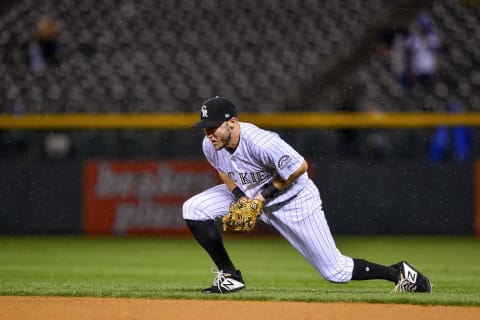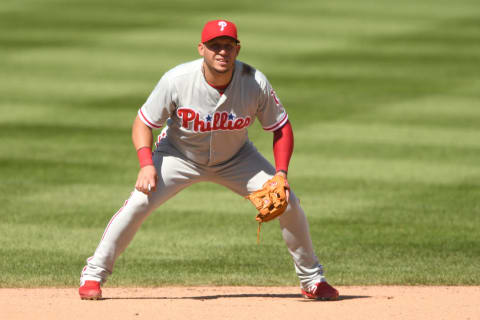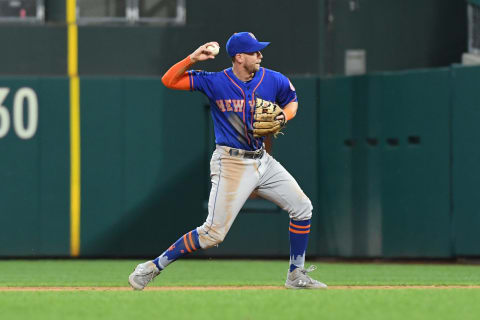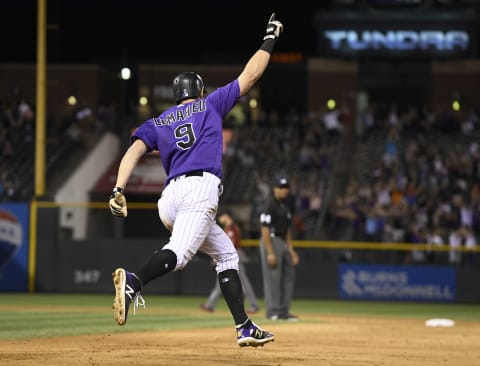Colorado Rockies: Second Base Options for the 2019 Season


If the Colorado Rockies want to carry the momentum they created in 2018 into 2019 they’ll need to make some upgrades, starting at second base.
This is an important year for the Colorado Rockies. After the 2019 season franchise cornerstone Nolan Arenado will be a free agent, and unless the team can prove that they’re a championship contender it’s not super likely that we’ll see him sporting the purple and black in 2020.
Luckily, the Rockies are coming off one of their best seasons in recent memory. Their 91-72 record was good for second in the NL West, and their starting rotation, led by 25-year-old ace Kyle Freeland, was the best the team has put forward in years. The exits of Paul Goldschmidt, Patrick Corbin, and AJ Pollock from the Arizona Diamondbacks also helps the Rockies chances, and it looks like the Dodgers are the only team they’ll have to compete with for the division crown.
So far the Colorado Rockies biggest move this offseason has been the signing of Daniel Murphy, who for the last few years has been a super solid offensive second baseman for the Washington Nationals. Initially, it seemed like this move was made to fill the hole left at second base by the exit of DJ LeMahieu, but it was later made clear that Murphy would be the teams new starting first baseman. This is probably a good call (Murphy is a defensive liability at second), but it still leaves the Rockies with the question of who will play second base?
Right now the team’s depth chart lists Ryan McMahon as the opening day starter at second base. McMahon is super young, he’ll be 24 next season, and he’s shown some promise, but his .232/.307/.376 slashline from last year is not indicative of a starting second baseman on a contending team. If the Rockies want to take advantage of this year they’ll need to upgrade at the position. Luckily for them, there are quite a few solid second basemen still out there. Let’s check some out.

Asdrúbal Cabrera
Last year Asdrúbal Cabrera spent time with both the Phillies and the Mets, ending 2018 with a respectable 112 OPS+ and 23 home runs in 592 plate appearances. His defense was less impressive, and his -5.4 UZR at second base was the worst of his career. Though this isn’t great it’s also not terrible, and Cabrera is certainly good enough to be an everyday starter for at least the next few seasons.
Cabrera’s biggest weak spot last year was his inability to be effective against left-handed pitching. He’s a switch hitter, but lefties still had a huge platoon advantage against him and he slashed .250/.287/.359 against them compared to .267/.327/.429 against righties. Trevor Story and Nolan Arenado both excel against southpaws, so hopefully they’d be able to make up for Cabrera on days where the Rockies face left-handed starters.
Although Cabrera would certainly best fit the Rockies as a second baseman he’d also bring with him the ability to play other positions, something that’s not offered by most of this year’s free-agent second baseman. Last year Cabrera looked decent in limited time at shortstop, with a 1.4 UZR in just over 200 innings played; he’s also had success at third, but if the Rockies are put in a position where Cabrera has to put time in there they’d have bigger things to worry about than Asdrubal’s glove.

Freddy Galvis
Freddy Galvis isn’t a player who is going to impress with his bat, but as far as defensive middle infielders go he’s the best on the market. Galvis doesn’t have any gold gloves to his name yet, but he’s always in the discussion, and his DRS last year put him at 8th among qualifying shortstops. Second is a less demanding defensive position, and Galvis would thrive there if it was his primary post.
Offensively Galvis isn’t much to write home about. He hits the ball pretty soft, with an average exit velocity of only 87.5 MPH, and nearly half of his balls put into play are hit on the ground. Needless to say, this is not a good combination.
The Rockies line up is already stacked with some pretty impressive hitters, so burying Galvis at the bottom of their line up wouldn’t do too much harm to the team. Also, with Daniel Murphy being a pretty inept defender they might need someone with Galvis’ glove to make up for things on the right side of the infield.

Jeff McNeil
For some reason, it does not seem like the Mets are totally sold on Jeff McNeil, a July call up who dazzled fans by slashing .329/.381/.471 in 248 plate appearances. McNeil pretty instantly became a fan favorite, but after the teams’ acquisition of Robinson Cano it’s not clear where he’ll fit in in 2019.
The Mets are certainly down to at least discuss trading McNeil (he was one of the players mentioned during Cano negotiations), but it’s not clear what it would take for them to move him. The young Raimel Tapia could be an interesting answer to the Mets center field problem, but they’ve already signed a lot of weird center field options and it would take more than him to move McNeil. Still, it might be worth a shot, and the Rockies could also offer up some bullpen arms to improve another area of need for the Mets.
Above all else, McNeil is a contact machine, with a good eye and contact percentage comparable to Anthony Rizzo or Joey Votto. McNeil doesn’t hit the ball as hard as either, and his sample size is infinitely smaller, but it’s still a good sign for a player with less than a full season under his belt and plenty of room to develop. He also does a good job of keeping the ball in the air, and his floor, for now, is still that of an average everyday player.

DJ LeMahieu
D.J. LeMahieu didn’t extend his contract with the Rockies, leading to his free agency, but since then there hasn’t been much movement for him. To be fair there’s plenty of players who seem kind of stagnant right now, and the market for him should heat up after Manny Machado signs, but we shouldn’t totally count the Rockies out if it just yet (if they want LeMahieu back).
More from Colorado Rockies
- Versatile Michael Toglia shines in second season for Colorado Rockies
- Matt Koch gamble pays dividends for Colorado Rockies
- Colorado Rockies: Ty Blach lives his faith despite series of challenges
- How pitching guru Brent Strom would fix the Colorado Rockies at Coors Field
- Ezequiel Tovar is beginning to meet Colorado Rockies’ high rookie expectations
LeMahieu’s play last year certainly makes him an attractive option at second base; he was a gold glover who slashed .276/.321/.428 over 581 plate appearances. With these numbers, LeMahieu hoped to be well received in the free agent market but owners have been stingy this year, and you could argue that players aren’t being offered what they deserve (I certainly would).
It would be a shame if LeMahieu didn’t want to be in Colorado but was forced back there by the market, and I do hope that if they pursue him the Rockies offer him a good deal. He’ll be 30 next season and looks to be pretty durable, so he’s certainly deserving of a good contract.
dark. Next. Vegas is off on the Rockies
It’s already been shown that he’s a good fit for the Colorado Rockies lineup, so if something can be worked out that suits both parties LeMahieu’s return to Colorado could be good for all involved.